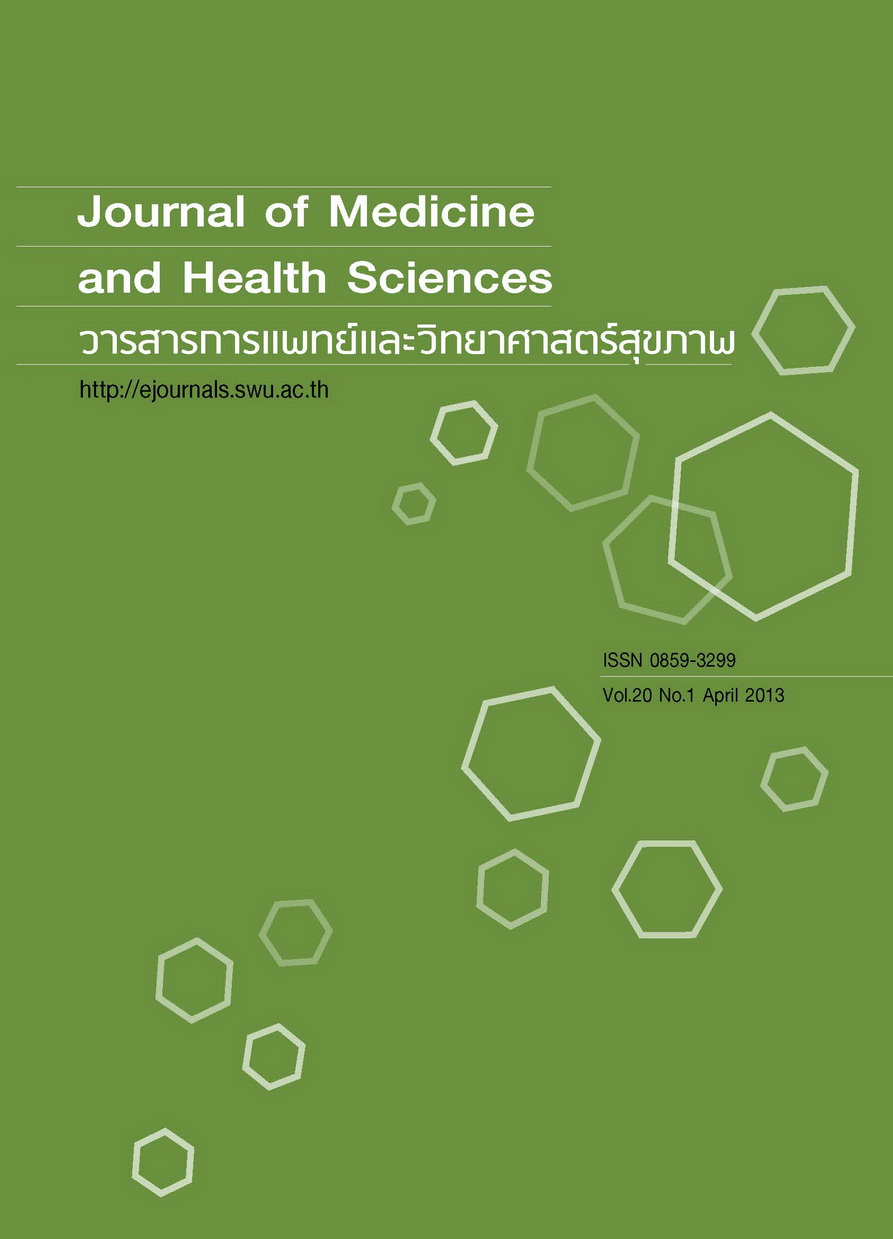Evaluation of attention using electroencephalography and application in children with attention deficit hyperactivity disorder
Keywords:
โรคซนสมาธิสั้น, คลื่น P3, คลื่น N2, Attention deficit hyperactivity disorder, P3 wave, N2 waveAbstract
Attention is a cognitive process that endows humans with the ability to concentrate on interesting stimuli for a long period of time, and is considered as a basic component of intelligence. Currently, electroencephalography (EEG) is one of the techniques used for the evaluation of brain functions. The analysis of brain waves in the quantitative view, called quantitative EEG (qEEG), reveals the alteration in alpha and gamma waves during the period of attentiveness. The event related potentials (ERP) using odd-ball paradigm also demonstrate change of ERP waveforms, particularly the P3 or P300 wave, which is an ERP waveform involved in cognitive processing. Children with attention deficit hyperactivity disorder (ADHD) show alteration of the ERP waveform, especially a reduction in the amplitude of the P3 wave. The ERP recording using Go-NoGo paradigm reveals the impairment of inhibitory control in ADHD children, which is evident from the change in N2 or N200 wave during the NoGo condition. In individuals who practice meditation, there is also an alteration of the ERP waveforms. These research evidences suggest that the different levels of attention in patients with attention impairment as well as meditators are able to be shown via the pattern of brain wave changes.
การประเมินความตั้งใจจดจ่อโดยการตรวจ คลื่นไฟฟ้าสมองและการประยุกต์ใช้ ในเด็กที่เป็นโรคซนสมาธิสั้น
ความตั้งใจจดจ่อเป็นกระบวนการทางสติปัญญาที่ทำให้มนุษย์สามารถจดจ่อกับสิ่งกระตุ้นที่สนใจได้เป็นระยะเวลา นานและเป็นพื้นฐานที่สำคัญของการมีสติปัญญาที่ดีในปัจจุบันการตรวจคลื่นไฟฟ้าสมองเป็นวิธีหนึ่งที่สามารถใช้ประเมิน การทำงานของสมองได้การวิเคราะห์คลื่นไฟฟ้าสมองในเชิงปริมาณแสดงให้เห็นการเปลี่ยนแปลงของคลื่นอัลฟาและคลื่น แกมมาในขณะที่บุคคลกำลังมีความตั้งใจจดจ่อ การตรวจคลื่นไฟฟ้าสมองชนิดอีอาร์พีโดยใช้แบบทดสอบชนิด oddball แสดงให้เห็นการเปลี่ยนแปลงของคลื่นไฟฟ้าสมองในหลายรูปแบบ โดยเฉพาะการเปลี่ยนแปลงของคลื่น P3 หรือคลื่น P300 ซึ่งเป็นคลื่นที่เกี่ยวข้องกับกระบวนการทางสติปัญญาในเด็กที่เป็นโรคซนสมาธิสั้นซึ่งมีความบกพร่องของความตั้งใจจดจ่อจะมี การเปลี่ยนแปลงคลื่นไฟฟ้าสมองชนิดอีอาร์พีโดยเฉพาะการลดลงของความสูงของคลื่น P3 และการตรวจคลื่นไฟฟ้าสมอง ชนิดอีอาร์พีโดยใช้แบบทดสอบชนิด Go-NoGo จะพบความบกพร่องของการยับยั้งตนเองในเด็กที่เป็นโรคนี้ซึ่งแสดงให้เห็น จากการเปลี่ยนแปลงของคลื่น N2 หรือคลื่น N200 ในภาวะ NoGo สำหรับบุคคลที่ปฏิบัติสมาธิอย่างต่อเนื่องจะพบการ เปลี่ยนแปลงคลื่นไฟฟ้าสมองชนิดอีอาร์พีเช่นกัน หลักฐานการวิจัยเหล่านี้บ่งว่า ระดับของความตั้งใจจดจ่อที่แตกต่างกันใน ผู้ป่วยที่มีความบกพร่องของความตั้งใจจดจ่อและในผู้ที่ปฏิบัติสมาธิสามารถแสดงให้เห็นได้จากรูปแบบของคลื่นไฟฟ้าสมองที่ เปลี่ยนแปลงไป



